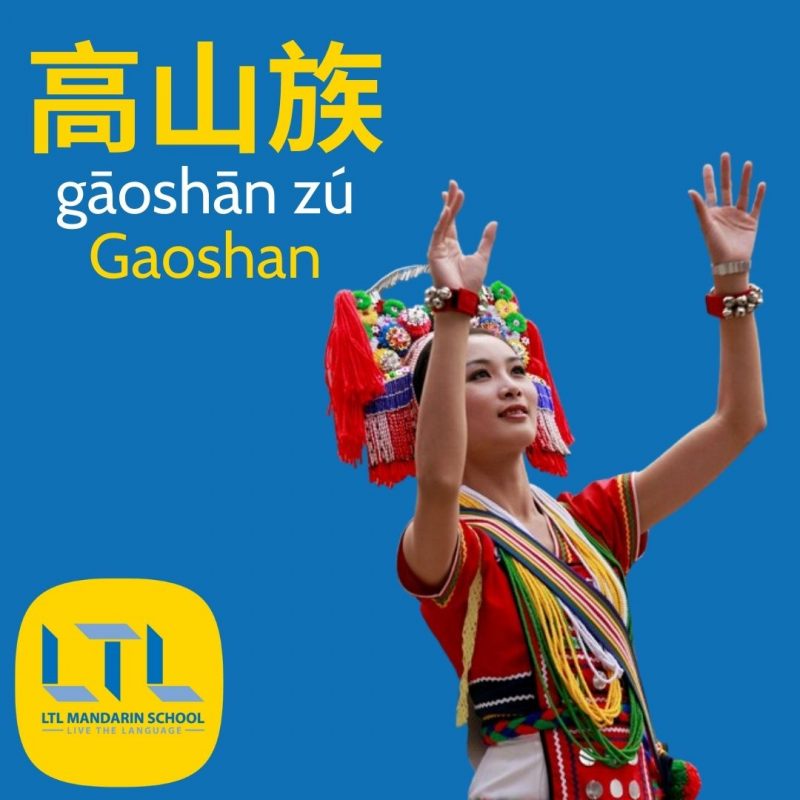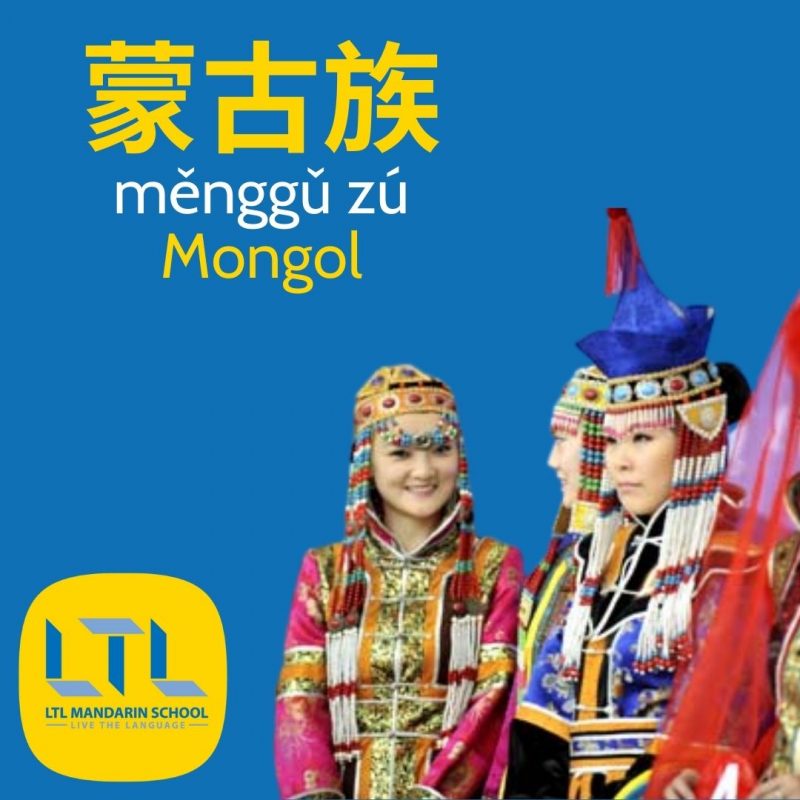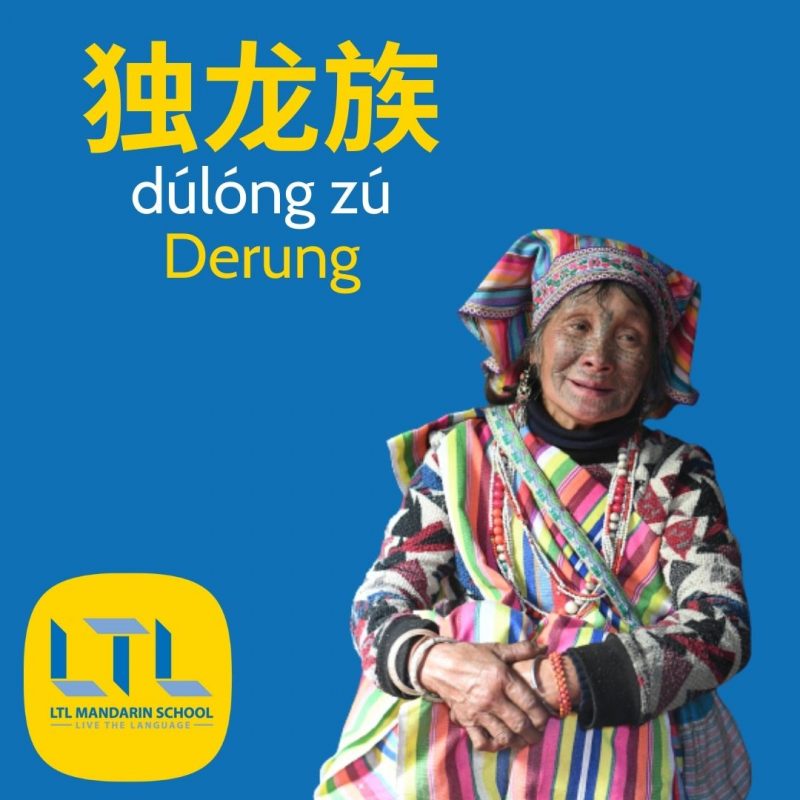Chinese Ethnic Groups – Han Chinese and 55 Minorities
Did you know that there are 56 officially recognised Chinese ethnic groups in China?
When most people think of China, they just think of Han Chinese culture, as this is the most prevalent. However, China’s many ethnic minorities all have their own unique culture, customs, dress etc.
Let’s explore some of China’s different ethnic groups from some of the biggest and most well known to the smallest and most obscure.
Chinese Ethnic Groups – An Introduction
Chinese Ethnic Groups – Han Chinese
Chinese Ethnic Groups – Three Largest Ethnic Minorites
Chinese Ethnic Groups – Three Smallest Ethnic Minorites
Chinese Ethnic Groups – Three of the Most Well Known
Chinese Ethnic Groups – Three of the Most Unique
Chinese Ethnic Groups – The Full List
Chinese Ethnic Groups – An Introduction
Ethnic group in Chinese is 民族 mínzú, however this can also refer to nationality, so sometimes it is more specifically referred to as 族群 zǔqún.
The biggest of the Chinese ethnic groups is Han Chinese which accounts for over 90% of China’s population. The remaining 55 ethnic groups are known as “ethnic minorities” (少数民族 shǎoshù mínzú) as they account for such a small amount of the population.

Although there are officially 56 ethnic groups, there are some people in China who identify themselves as an “unrecognised ethnic group” (未识别民族 wèi shíbié mínzú) such as Jewish, Tuvan, Oirat, Ili Turki. Some scholars actually estimate that there are over 200 distinct ethnic groups that inhabit China.
Out of the 55 Chinese ethnic minorities 54 of them have their own spoken language, with the only exception being the Hui Minority.
23 ethnic minority groups also have their own written language.
We’ve written a lengthy article about everything you need to know on the hundreds of languages spoken in China, you should definitely check it out!
Chinese Ethnic Groups – Han Chinese

As the majority ethnic group in China, Han Chinese (汉族 hàn zú) is what most people think of when they think of Chinese people and Chinese culture.
As of 2010, 91.51% of the Chinese population are classified as Han Chinese that’s a staggering 1.2 billion people!
Not only are Han people the largest ethnic group in China, but are in fact the world’s largest ethnic group accounting for about 18% of the global population.
Han people can be found in almost every part of China but they are mainly located in the middle and lower reaches of the Yellow River, Yangtze River and Pearl River and the Northeast Plain.
Mandarin is the spoken and written language of most Han people, and is the official language of China.

The Han Chinese take their ethnic name from the Han dynasty (汉朝 hàncháo) which was the second imperial dynasty of China.
This is also where the name ‘Han language’ (汉语 hànyǔ) and hanzi (汉字 hànzì) come from.
The Han dynasty lasted for over 400 years (206 BC–220 CE) and is known as a golden age in Chinese history.
During the Han dynasty arts and culture flourished arts and culture flourished and the Han Empire expanded militarily in all directions.
Be sure to watch China History Documentary if you’re interested in learning more about Chinese history.
Chinese Ethnic Groups – Three Largest Ethnic Minorities
Out of the 55 officially recognised ethnic minorities in China, let’s have a look at the three largest groups first.
Zhuang
The biggest of the 55 ethnic minorities in China are the Zhuang (壮族 zhuàng zú).

About 18 million Zhuang live in south and southeast China. They mostly inhabit the Guangxi Zhuang Autonomous Region and Yunnan Province.
However, the Zhuang actually originated in Sichuan, but were forced to move south when the Qin dynasty and Han dynasty began to expan southwards.
The Zhuang are famous for their beautiful terraced rice fields, tribal villages and towns.
The city of Guilin in Guangxi is a hugely popular tourist destination where many travellers go to observe and experience Zhuang culture.
The Zhuang do have their own spoken languages which are related to Thai, though most also speak Mandarin.
Hui
The Hui (回族 huí zú) are the second biggest ethnic minority in China and also the most widely distributed.

They have a population of around 10.5 million and most can can be found in Ningxia Hui Autonomous Region in northwestern China.
However, they are also found in Gansu, Henan, Hebei, Qinghai, Shandong, Yunnan, Xinjiang, Anhui, Liaoning, Heilongjiang, Jilin, Shaanxi, Beijing, Tianjin.
That’s a lot of places!
The Hui are one of China’s two major Muslim Chinese ethnic groups in China, with the other being the Uighur.
Both the Hui and Uighur are descendants of the Turks, but unlike the Uighur they didn’t retain a Turkish dialect and mostly speak Mandarin.
Nowadays, the Hui have largely assimilated into Han society. They maintain Islamic practices such as refraining from eating pork and Hui men will wear white caps and women headscarves.
Although, with the modernisation of China many young Hui people will just wear mainstream fashion clothes.
Manchu
Another one of the largest Chinese ethnic groups is the Manchu (满洲族 mǎnzhōu zú) who have a population of just over 10 million.

The Manchu’s played a prominent role in Chinese history, ruling China’s last imperial dynasty: the Qing dynasty 1644–1911 (清朝 qīngcháo).
The last emperor of China Pu Yi was Manchu.
The Manchus are mainly based in Northeastern China and give the name to their homeland: Manchuria.
Most often Manchuria refers to the area of three northeastern provinces: Heilongjiang, Jilin, and Liaoning.
Due to their prominent role in Chinese history many Manchu customs are recognisable today such as the Qipao (旗袍 qípáo) a traditional Chinese dress and heated beds called kangs (炕 kàng).
Unlike many other Chinese ethnic minorities very few Manchu people can still speak the language and even fewer can read Manchu writings.
Historically both Manchu men and women were skilled at archery and on horseback.
Children as young as 6 or 7 were taught to hunt with bows and arrows and teenagers were taught to hunt on horseback in full hunting gear!

World Heritage Sites in China – 15 of the Most Amazing Spots
LTL’s Breakdown of 15 World Heritage Sites in China Did you know that there are an unbelievable 55 listed UNESCO World Heritage Sites in China! This makes China rank top in the world along with Italy which also has 55…
Chinese Ethnic Groups – Three Smallest Ethnic Minorities
Following on from the three largest Chinese ethnic minorities, what about the three smallest?
Tatars

Chinese Tatars (塔塔尔族 tǎtǎ’ěr zú) are the smallest of the 56 Chinese ethnic groups with a population of only around 3,556 (2010).
Chinese Tatars live mainly in the cities of Yining, Tacheng and Ürümqi in Xinjiang.
The ancestors of Chinese Tatars are Volga Tatar tradesmen who mostly settled in Xinjiang and more recently Crimean Tatars who were sent into exile by Joseph Stalin in 1944.
Chinese Tatars speak an archaic variant of the Tatar language, and use the Arabic variant of the Tatar alphabet. Chinese Tartars are mostly Sunni Muslims and Islam is the major component of Tatar culture.
Lhoba
Just ahead of the Tatars with a population in 2010 of 3,682 are the Lhoba (珞巴族 luòbā zú).

Lhoba refers to a diverse mix of Sino-Tibetan-speaking tribespeople who live in a region in southeastern Tibet called Pemako.
Most people who have been designated as Lhoba don’t actually refer to themselves as this as they speak many different languages and don’t view themselves as a single ethnic group.
The Lhoba are made up of two main tribal groups: the Mishmi people (义都 yìdū), who speak the Idu Mishmi language, and the speakers of the Bokar dialect of Abo Tani.
The customs, dress and habits of the Lhoba people can vary widely depending on different clan members. However, due to their close proximity to the Tibetan people there is some Tibetan influence in their culture. For example some tribes dress resembles that of the Tibetan people.
Gaoshan
The Gaoshan (高山族 gāoshān zú) are also known as Taiwanese indigenous peoples.

Only about 4,000 Gaoshan live in mainland China, which is why they are counted as the third smallest of the Chinese ethnic groups.
These 4,000 mostly live in Fujian.
However, the majority of Gaoshan actually live in Taiwan and make up 2.38% of the island’s population which is around 570,000 people.
According to recent research it is suggested that the ancestors of the Gaoshan may have been living on Taiwan for 5,500 years in relative isolation before Han Chinese immigration from mainland China began in the 17th century.
Due to the difference in regions and languages the Gaoshan ethnic Minority is also divided into 13 subgroups.
Of the Gaoshan located in mainland China, there are three main prominent subgroups: the Amis, the Bunun and the Paiwan.
Chinese Ethnic Groups – Three of the Most Well Known
Mongol
Chinese Mongols (蒙古族 měnggǔ zú) are perhaps the most famous and well known ethnic minority.
Chinese Mongols are found in northern China, most notably, as you may guess from the name, in Inner Mongolia.

There are around 5.8 million mongols living in China, which is actually more than the population of Mongolia itself which is 3.3 million!
The Mongol ancestors belonged to nomadic tribes that roamed around the Erguna River.
Many of these Mongol tribes were unified under the most famous Mongolian in history: Genghis Khan.
Mongolians are still famous today for their horsemanship, archery and wrestling. Every summer in Inner Mongolia there is the Naadam Grassland Festival where Mongol ethnic people compete in horse racing, archery, and wrestling.
Another famous feature of Mongolian culture is Mongolian throat singing.
There is even a famous Mongolian heavy metal rock band called The Hu who combine rock and heavy metal with traditional Mongolian instrumentation, including Mongolian throat singing.
Tibetan
Another one of the most famous and perhaps most popular Chinese ethnic groups has to be Tibetans (藏族 zàng zú).

There are around 6.5 million Tibetans living in China, approximately 2 million of them can be found in Tibet, with the rest spread out in neighbouring provinces such as Qinghai, Sichuan, Gansu and Yunnan.
The most well known Tibetans are of course the Dalai Lamas, which is the title given to monks of the Gelug or Yellow Hat school of Tibetan Buddhism.
Most Tibetans practice Tibetan Buddhism, however a small minority are Muslim and some observe the indigenous Bon religion.
There are many Tibetan Buddhist temples in China, such as the Lama Temple in Beijing.
Miao
The Miao (苗族 miáo zú) are another Chinese ethnic group that have proved to be popular with tourists.

They are one of the largest ethnic minorities in southwest China, and mainly inhabit Guizhou.
Many Miao groups have different languages, histories and cultures and some Miao do not think they belong to that ethnic group.
It’s no surprise some scholars believe there to be over 200 distinct ethnic groups!
However, the majority of Miao speak dialects that are members of Miao-Yao language family and do share cultural similarities.
Compared to many other minority groups in China Miao women traditionally have more independence, mobility and social freedom.
For instance Miao girls have more choice over who they marry.
For one group of Miao the tradition is for Miao girls to tie one end of their belt around the waist of the young man they admire.

Yunnan Food Guide – 10 Must Try Dishes For First Timers 🥘
Your Complete Guide to Eating Yunnan Food Although Yunnan food (云南菜 yúnnán cài) is not listed as one of the eight great Chinese cuisines, it is truly a delicious and unique style of Chinese food. Some fans have even dubbed…
Chinese Ethnic Groups – Three of the Most Unique
With 56 officially recognised Chinese ethnic groups and many more unrecognised ones it’s no surprise that there are many ethnic groups with some truly unique customs.
This especially seems to be the case when it comes to the traditions and customs of some of the women in ethnic minorities.
Mosuo
Mosuo (摩梭 mósuō), also referred to as the Na people, are officially classed as part of the Nakhi ethnic group (纳西族 nàxī zú) despite being culturally distinct.

They are found in Yunnan and Sichuan provinces, close to the border with Tibet.
Referred to as China’s last matrilineal society, and dubbed the ‘Kingdom of Women’ by the Chinese, the Mosuo have some very unique customs, especially concerning ‘marriage’.
The Mosuo are a matrilineal society which means that their descent is traced through the female line.
Children belong to and reside in their mother’s home, sometimes the father of children will be unknown which does not carry any stigma, unlike in other societies.
The matriarch is the head of the household and has absolute power. Property is also passed down through the female line.
One of the best known aspects of the Mosuo is that they practice “walking marriage” (走婚 zǒu hūn). This means that during the day both partners live with their extended family – their mother and her relatives.
At night women are then able to invite the man of their choice to their sleeping chamber.
A man is never allowed to visit a woman uninvited. In the morning the man then returns to his mother’s house.
Mosuo women are allowed to change partners whenever they like, or have multiple partners if they want to. However, only having one partner is not uncommon and often walking marriages are long term.
Red Yao
The Red Yao (红瑶 hóng yáo) are a sub group of the Yao (瑶族 yáo zú) ethnic minority group.
This particular live in the Huangluo Village in Guangxi.

The Red Yao are most well known for their women who have extraordinary jet black hair that can grow up to 2.1 metres!
In fact the women prize their hair so much that they only get it cut once in their lifetime – when they turn 18.
It used to be forbidden for a man outside of the family to see a woman’s hair but in recent years Red Yao women are happy to show their hair off.
Some Red Yao women will even show their hair to tourists and impart some of their beauty secrets, apparently washing your hair in fermented rice water is key!
Red Yao women also indicate their marital status through their hair:
- Covered hair means the woman is single and looking for a husband.
- Hair wrapped in a circular tray on top of her head, means the woman is married but has no children.
- If there is a bun at the front of her wrapped hair that means she is married and has children.
Who knew so much could be said through your hair?
Derung

The last in our list of unique Chinese ethnic groups are the Derung (独龙族 dúlóng zú).
There are around 6,000 Derung in China and they are only found in Yunnan province.
Traditionally Derung women would tattoo their faces when they reached the age of 12 or 13.
However, this practice was abolished in 1967, although the last Derung woman to get facial tattoos was in 1970. Now there are only about 20 women who still bear the marks of the Derung ethnic group.
It is still unclear what the reason for women getting facial tattoos was.
Some people believe it was to make women less attractive so they wouldn’t be kidnapped by neighbouring ethnic groups.
Others simply say that is is a symbol of the Derung people, and some say that it is because the Derung believe that woman’s soul can’t leave her body unless she has tattoos on her face.

The 9 Most Famous Women from Chinese History
There have been some real badass famous Chinese women over the years. Here we’re going to have a look at the ultimate top 9 that you should know!
Chinese Ethnic Groups – The Full List
Below you can see a full list of all 56 officially recognised Chinese ethnic groups, arranged in order of population.
| English Name | Chinese Name | Percentage of Population | Main Areas Located |
|---|---|---|---|
| Han Chinese | 汉族 hàn zú | 91.6474% | Yellow River, Yangtze River and Pearl River and the Northeast Plain |
| Zhuang | 壮族 zhuàng zú | 1.2700% | Guangxi, Yunnan, Guangdong, Guizhou |
| Hui | 回族 huí zú | 0.7943% | Ningxia, Gansu, Henan, Hebei, Qinghai, Shandong, Yunnan, Xinjiang, Anhui, Liaoning, Heilongjiang, Jilin, Shaanxi, Beijing, Tianjin |
| Manchu | 满族 mǎn zú | 0.7794% | Liaoning, Jilin, Heilongjiang, Hebei, Beijing, Inner Mongolia |
| Uighur | 维吾尔族 wéiwú’ěr zú | 0.7555% | Xinjiang |
| Miao | 苗族 miáo zú | 0.7072% | Guizhou, Hunan, Yunnan, Guangxi, Sichuan, Hainan, Hubei |
| Yi | 彝族 yí zú | 0.6538% | Sichuan, Yunnan, Guizhou, Guangxi |
| Tujia | 土家族 tǔjiā zú | 0.6268% | Hunnan, Hubei |
| Tibetan | 藏族 zàng zú | 0.4713% | Tibet, Qinghai, Sichuan, Gansu, Yunnan |
| Mongol | 蒙古族 měnggǔ zú | 0.4488% | Inner Mongolia, Xinjiang, Liaoning, Jilin, Heilongjiang, Gansu, Hebei, Henan, Qinghai |
| Dong | 侗族 dòng zú | 0.2161% | Guizhou, Hunan, Guangxi |
| Bouyei | 布依族 bùyī zú | 0.2153% | Guizhou |
| Yao | 瑶族 yáo zú | 0.2098% | Guangxi, Hunan, Yunnan, Guangdong, Guizhou |
| Bai | 白族 bái zú | 0.1451% | Yunnan, Guizhou |
| Korean | 朝鲜族 cháoxiǎn zú | 0.1374% | Jilin, Liaoning, Heilongjiang |
| Hani | 哈尼族 hāní zú | 0.1246% | Yunnan |
| Li | 黎族 lí zú | 0.1098% | Hainan |
| Kazakh | 哈萨克族 hāsàkè zú | 0.1097% | Xinjiang, Gansu, Qinghai |
| Dai | 傣族 dǎi zú | 0.0946% | Yunnan |
| She | 畲族 shē zú | 0.0532% | Fujian, Zhejiang, Jiangxi, Guangdong |
| Lisu | 傈僳族 lìsù zú | 0.0527% | Yunnan, Sichuan |
| Dongxiang | 东乡族 dōngxiāng zú | 0.0466% | Gansu, Xinjiang |
| Gelao | 仡佬族 gelǎo zú | 0.0413% | Guizhou, Guangxi |
| Lahu | 拉祜 lāhù zú | 0.0365% | Yunnan |
| Wa | 佤族 wǎ zú | 0.0322% | Yunnan |
| Sui | 水族 shuǐ zú | 0.0309% | Guizhou, Guangxi |
| Nakhi | 纳西族 nàxī zú | 0.0245% | Yunnan, Sichuan |
| Qiang | 羌族 qiāng zú | 0.0232% | Sichuan |
| Tu | 土族 tǔ zú | 0.0217% | Qinghai, Gansu |
| Mulao | 仫佬族 mùlǎo zú | 0.0162% | Guangxi |
| Xibe | 锡伯族 xībó zú | 0.0143% | Xinjiang, Liaoning, Jilin |
| Kyrgyz | 柯尔克孜族 kē’ěrkèzī zú | 0.0140% | Xinjiang, Heilongjiang |
| Jingpo | 景颇族 jǐngpō zú | 0.0111% | Yunnan |
| Daur | 达斡尔族 dáwò’ěr zú | 0.0099% | Inner Mongolia, Heilongjiang, Xinjiang |
| Salar | 撒拉族 sālā zú | 0.0098% | Qinghai, Gansu |
| Blang | 布朗族 bùlǎng zú | 0.0090% | Yunnan |
| Maonan | 毛南族 máonán zú | 0.0076% | Guangxi |
| Tajik | 塔吉克族 tǎjíkè zú | 0.0038% | Xinjiang |
| Pumi | 普米族 pǔmǐ zú | 0.0032% | Yunnan |
| Achang | 阿昌族 āchāng zú | 0.0030% | Yunnan |
| Nu | 怒族 nù zú | 0.0028% | Yunnan |
| Evenki | 鄂温克族 èwēnkè zú | 0.0023% | Inner Mongolia, Heilongjiang |
| Gin | 京族 jīng zú | 0.0021% | Guangxi |
| Jino | 基诺族 jīnuò zú | 0.0017% | Yunnan |
| De’ang | 德昂族 dé’áng zú | 0.0015% | Yunnan |
| Bonan | 保安族 bǎo’ān zú | 0.0015% | Gansu |
| Russian | 俄罗斯族 éluósī zú | 0.0012% | Xinjiang |
| Yugur | 裕固族 yùgù zú | 0.0011% | Gansu |
| Uzbek | 乌孜别克族wūzībiékè zú | 0.0008% | Xinjiang |
| Monba | 门巴族 ménbā zú | 0.0008% | Tibet |
| Oroqen | 鄂伦春族 èlúnchūn zú | 0.0006% | Inner Mongolia, Heilongjiang |
| Derung | 独龙族 dúlóng zú | 0.0005% | Yunnan |
| Hezhen | 赫哲族 hèzhé zú | 0.0004% | Heilongjiang |
| Gaoshan | 高山族 gāoshān zú | 0.0003% | Taiwan (population not counted), Fujian, Zhejiang |
| Lhoba | 珞巴族 luòbā zú | 0.0003% | Tibet |
| Tatars | 塔塔尔族 tǎtǎ’ěr zú | 0.0003% | Xinjiang |
It is estimated that around 0.0480% percent of the Chinese population belong to the “unrecognised ethnic group” (未识别民族 wèi shíbié mínzú) category.
Which of these ethnic minorities did you think is the most interesting? Comment below to let us know!
Chinese Ethnic Groups – FAQs
What is the main ethnic group in China?
The main ethnic group in China is the Han Chinese, which account for about 91% of the population.
How many Chinese ethnic groups are there?
There are 56 officially recognised Chinese ethnic groups.
What are the three largest ethnic groups in China?
The three largest ethnic groups in China are the Han, the Zhuang and the Hui.
What are Chinese ethnic minorities?
There are 56 ethnic groups in China, the main ethnic group is the Han which makes up 91% of the population, Chinese ethnic minorities refer to the other 55 ethnic groups.
How many Chinese ethnic minorities are there?
There are 55 officially recognised ethnic minorities in China, with 56 ethnic groups overall.
What is ethnic group in Chinese?
Ethnic group in Chinese is 民族 mínzú, it is also sometimes more specifically referred to as 族群 zǔqún.
What is ethnic minority in Chinese?
Ethnic minority in Chinese is 少数民族 shǎoshù mínzú.
How many languages are spoken in China?
According to Ethnologue.com there are 292 living languages in China. Many others exist, but are extinct today.
Check out our Languages in China Guide for more details.
Want more from LTL?
If you wish to hear more from LTL Mandarin School why not join our mailing list.
We give plenty of handy information on learning Chinese, useful apps to learn the language and everything going on at our LTL schools!
Sign up below and become part of our ever growing community!
What about Online Chinese Classes also? We’ve got the best teachers, from the comfort of your own home!


 Hi, my name is Ilaria! I am from Italy and I am a Student Advisor at LTL. Fancy coming to study with us in China? Drop me a message.
Hi, my name is Ilaria! I am from Italy and I am a Student Advisor at LTL. Fancy coming to study with us in China? Drop me a message.








4 comments
I had no idea there were so many ethnic minorities iin china thanks for the intersting article!
Hi Frankie,
Yes it's amazing how many there, especially since the 56 ethnic groups in China only counts for the officially recognised ones when in reality there are estimated to be up to 200 different ethnic groups!
Thanks, The LTL Team
[…] noodles are a speciality of the Hui Muslim ethnic group and can be found all over China. Similar to Japanese ramen, the noodles are served in a clear beef […]
Is there any larger ethnic groups festival in China? Uniting all the people.